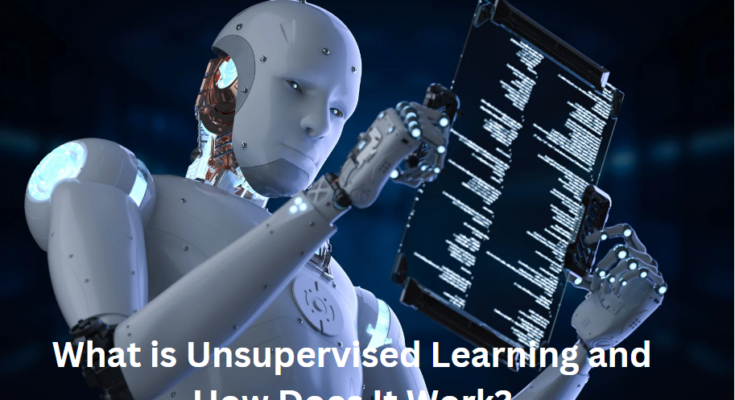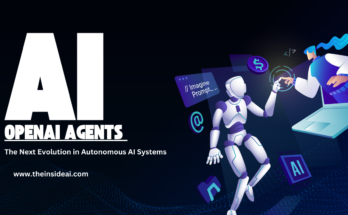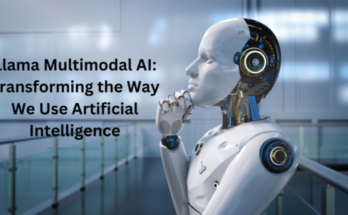The algorithm uses unlabeled data to train in Unsupervised Learning. This means that the data provided to the algorithm does not come with predefined categories or labels. Instead, the algorithm attempts to learn the data’s underlying patterns, structures, and relationships. Unlike supervised learning, no instructor provides answers—it’s more like exploring a new city without a map and trying to make sense of the layout on your own.
Purpose of Unsupervised Learning

The primary purpose of Unsupervised Learning is to explore the data and uncover hidden patterns or groupings without prior knowledge or external guidance. This technique is beneficial in the following scenarios:
1. Data Exploration: When dealing with large datasets, Unsupervised Learning helps understand the data’s structure and distribution.
2. Anomaly Detection: Identifying unusual data points that do not fit the general pattern is crucial in fields like fraud detection and network security.
3. Clustering: Grouping similar data points based on their features, which is useful in market segmentation, image compression, and bioinformatics.
4. Dimensionality Reduction: Simplifying data by reducing the number of variables while retaining its essential information, which is helpful for data visualization and reducing computational costs.
How Unsupervised Learning Works

Unsupervised Learning can be broadly categorized into clustering and association problems. Here’s a closer look at how each of these works:
Clustering

Clustering is the task of grouping a set of objects in such a way that objects in the same group (or cluster) are more similar to each other than to those in other groups. Common clustering algorithms include:
1. K-Means Clustering
– Process: K-Means aims to partition the data into K clusters, where each data point belongs to the cluster with the nearest mean (centroid).
– Steps:
1. Initialize K centroids randomly.
2. Assign each data point to the nearest centroid.
3. Recalculate the centroids by taking the mean of all data points assigned to each cluster.
4. Repeat steps 2 and 3 until the centroids no longer change significantly.
– Purpose: This method is used in customer segmentation, document clustering, and image compression.
2. Hierarchical Clustering
– Process: This algorithm builds a hierarchy of clusters either by merging smaller clusters into larger ones (agglomerative) or by splitting larger clusters into smaller ones (divisive).
– Steps:
1. Start with each data point as a single cluster (agglomerative) or one large cluster containing all data points (divisive).
2. Merge or split clusters based on a chosen distance metric (e.g., Euclidean distance).
3. Repeat the process until the desired number of clusters is achieved or a specific condition is met.
– Purpose: Hierarchical clustering is used in phylogenetics, social network analysis, and market research.
Association

Association rule learning is about discovering interesting relationships between variables in large databases. One popular algorithm is:
1. Apriori Algorithm
– Process: This algorithm identifies frequent itemsets (combinations of items) in a dataset and extends them to generate association rules.
– Steps:
1. Identify the frequent individual items in the dataset.
2. Extend the frequent itemsets by adding one item at a time and checking their frequency.
3. Generate association rules from the frequent itemsets.
– Purpose: Association rules are widely used in market basket analysis, where the goal is to identify products that frequently co-occur in transactions.
Examples of Unsupervised Learning Applications

1. Market Basket Analysis: Retailers use Unsupervised Learning to analyze purchasing patterns and understand which products are frequently bought together. This helps in designing better marketing strategies and product placements.
2. Anomaly Detection: In cybersecurity, Unsupervised Learning algorithms detect unusual patterns that may indicate a breach or fraud. For instance, monitoring network traffic for irregularities can help in identifying potential cyber-attacks.
3. Customer Segmentation: Businesses use clustering techniques to group customers based on purchasing behavior, demographics, or other characteristics. This allows for more personalized marketing and improved customer service.
4. Image and Video Analysis: Unsupervised Learning is used to analyze and organize vast amounts of visual data. For example, clustering algorithms can be used to group similar images, making it easier to manage and retrieve media files.
Challenges in Unsupervised Learning

While Unsupervised Learning has many advantages, it also comes with challenges:
1. Interpretability: Since no labels guide the learning process, it can be difficult to interpret the results and understand the discovered patterns.
2. Evaluation: Unlike supervised learning, where accuracy and other metrics can be used to evaluate the model, Unsupervised Learning lacks straightforward evaluation metrics.
3. Scalability: Some Unsupervised Learning algorithms may not scale well with large datasets, requiring significant computational resources.
Conclusion
Unsupervised Learning is a powerful tool for uncovering hidden patterns and relationships in data. Clustering similar data points or discovering associations provides valuable insights that can drive decision-making and innovation across various industries. Despite its challenges, the potential of Unsupervised Learning to transform raw data into meaningful information makes it an essential technique in the ever-evolving field of machine learning.



